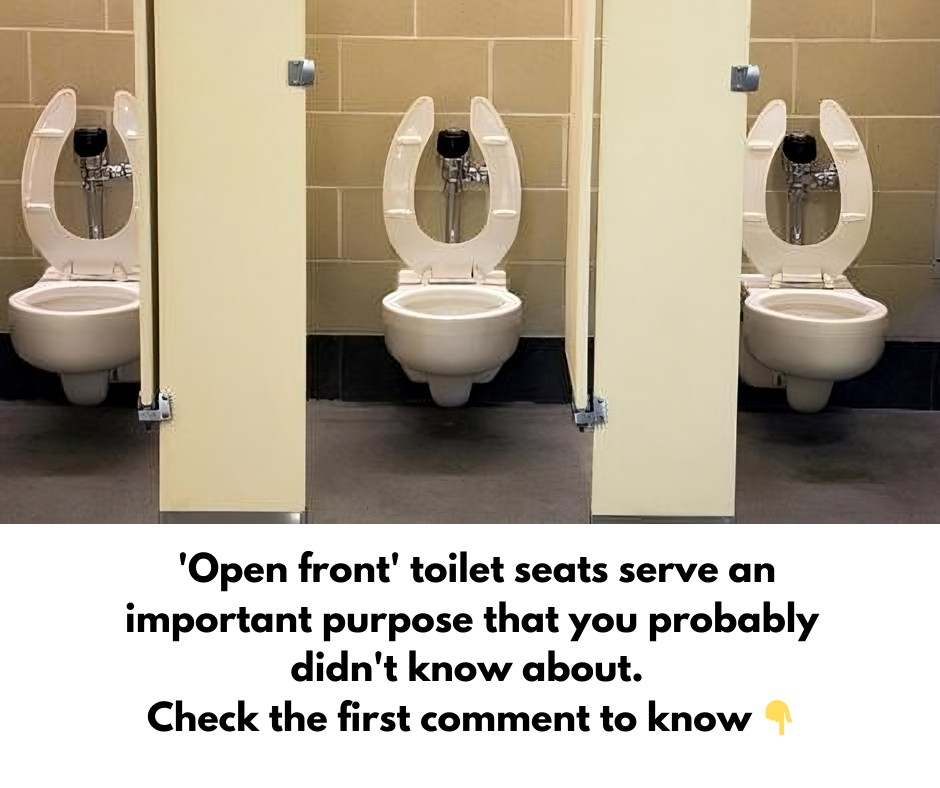Have you ever noticed that public restrooms typically have U-shaped toilet seats instead of the closed, circular seats you might have at home? It’s a small detail that many people overlook, but this unique design serves an important function. While there are plenty of theories floating around about the reason behind this design—ranging from hygiene to comfort—the truth is both practical and rooted in health and safety regulations. This simple innovation is more significant than you might think and can even change how you view public restrooms.

The Mystery of U-Shaped Toilet Seats
At first glance, the open-front toilet seat may seem like a minor difference, but it has sparked curiosity for years. Some believe the U-shape is all about cleanliness, while others think it’s designed to accommodate different body types. Some even speculate that it helps direct urine away from the seat, protecting the porcelain.
However, the real reason behind this design is surprisingly practical. According to experts, U-shaped toilet seats help reduce the risk of contamination and improve hygiene in public restrooms. By leaving an open space at the front, this design ensures that users are less likely to come into contact with potentially unsanitary surfaces.
A Design Focused on Hygiene
The primary purpose of the open-front toilet seat is to minimize contact with bodily fluids and promote cleanliness. Hugo Aguilar, Senior Vice President of Codes and Standards at The International Association of Plumbing and Mechanical Officials (IAPMO), explains, “Open front seats and elongated toilet bowls for public restrooms minimize the risk of the user coming into contact with contamination from previous users.” This design allows for easier cleaning and reduces the chances of coming into contact with residue left behind by others.
The gap at the front of the seat also makes it easier for custodial staff to clean, especially in high-traffic areas where thorough cleaning might not always be feasible. The open shape helps users avoid touching areas most likely to be contaminated, which is a key feature in promoting hygiene.
Designed with Women’s Health in Mind
Another significant benefit of the U-shaped seat is its contribution to women’s hygiene. The American Society of Plumbing Engineers highlights that the design makes it easier for women to wipe without their hands or tissues coming into contact with the seat. This seemingly small design choice provides an added level of comfort and cleanliness, making it easier for women to maintain personal hygiene in public restrooms.
Health expert Dr. Poonam Desai has pointed out another issue: when women “hover” over the seat to avoid sitting, it can strain the pelvic muscles, leading to incomplete bladder emptying. Over time, this can increase the risk of urinary tract infections (UTIs). The U-shaped seat encourages users to sit down, which not only helps with hygiene but also promotes better long-term health.
A Building Code Requirement
The U-shaped toilet seat isn’t just a matter of preference; in many places, it’s a requirement. The IAPMO’s Uniform Plumbing Code mandates that public restrooms use open-front seats or provide automatic seat cover dispensers. This code helps maintain a minimum level of hygiene in public facilities. While not every state follows these exact guidelines, the U-shaped seat has become a standard in most public restrooms across the United States.
Improving Public Restroom Hygiene
Let’s face it—public restrooms don’t always have the best reputation for cleanliness. Studies show that these spaces are often hotspots for germs, and some facilities even lack basic supplies like soap and toilet paper. These conditions can make people hesitant to use public restrooms, leading them to avoid the facilities altogether.
The open-front toilet seat can help mitigate these hygiene concerns by reducing direct contact with contaminated surfaces. Unlike closed, circular seats, which can make contact with more areas of the body, the U-shaped design limits exposure to germs, making the experience a little more sanitary.
The Hovering Dilemma
When faced with an unsanitary public restroom, many people opt to “hover” above the seat to avoid sitting on it. However, as Dr. Desai points out, this practice can cause more harm than good. Hovering puts unnecessary strain on the pelvic muscles, which can lead to incomplete bladder emptying and potentially increase the risk of UTIs. Instead, Dr. Desai recommends wiping the seat or using a disposable toilet cover. The open-front design encourages users to sit down, promoting better restroom hygiene and reducing the likelihood of splashing.
A Simple but Effective Solution
The U-shaped toilet seat might seem like a small detail, but it addresses multiple practical concerns. It allows for easier wiping, reduces direct contact with potentially contaminated surfaces, and encourages users to sit rather than hover. These design features help promote better hygiene in public restrooms while making the job of cleaning staff easier.
When you consider these benefits, it’s clear that the open-front toilet seat is more than just a design choice. It’s a practical solution that contributes to overall public health and hygiene. While public restrooms may never be spotless, this thoughtful design helps reduce contamination risks and makes the experience a little more bearable.
Conclusion: A Design That Protects Public Health
The open-front toilet seat is a small but significant feature in public restrooms. Designed to promote hygiene and reduce contact with contaminants, it plays a crucial role in making public spaces cleaner and safer. Next time you encounter one of these U-shaped seats, remember that it’s there for a reason, contributing to better health practices in an environment that is often less than sanitary.





